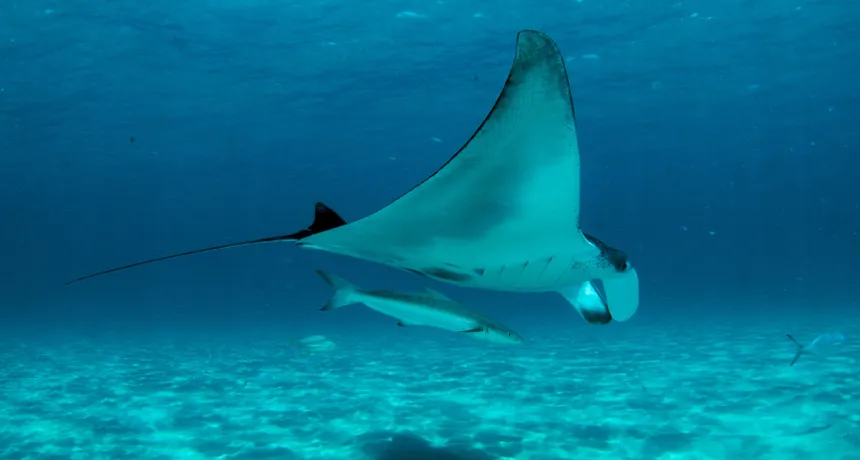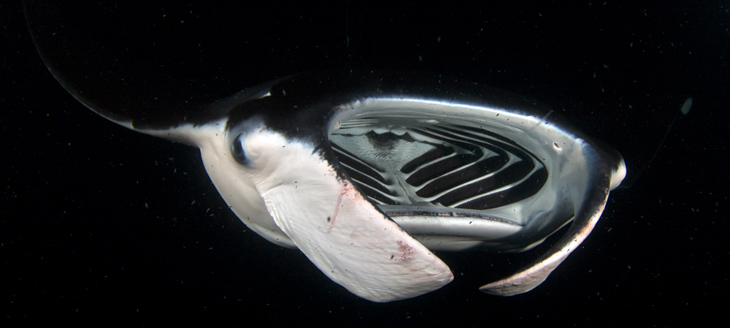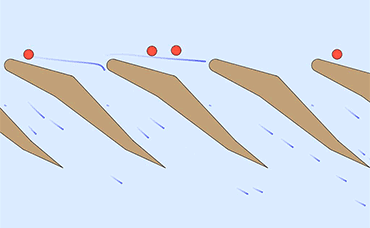
SMOOTH SWIMMER The giant oceanic manta ray (Manta birostris) captures plankton by swimming with its mouth open. New research reveals just how the animal filters out a meal from a mouthful of seawater.
Steve Kajiura
Manta rays were built for speed — and to filter feed.
The aerodynamic ocean dwellers efficiently separate plankton from seawater using a previously unknown kind of filtration system that resists clogs and captures tiny bits of plankton, researchers report September 26 in Science Advances.
Mantas are filter feeders, like many other ocean creatures. They pull plankton-laden seawater into their mouths, where arrays of cartilaginous fibers helps them swallow the plankton but release the seawater. For some filter feeders, the process can be compared to straining a pot of pasta and letting the water run through, says coauthor Misty Paig-Tran, a marine biologist at California State University, Fullerton. But for mantas, that analogy doesn’t quite work. Some of the plankton that mantas eat is small enough to slip through the gaps — more like grains of rice than chunky pasta shells. And mantas don’t have sticky filter mucus to snag these small particles, as sponges and bryozoans do.
Paig-Tran and her colleagues took CT scans of several manta ray species specimens from museums, then 3-D printed a replica of the filter found in one species, the giant oceanic manta ray (Manta birostris). The team placed the model filter in a tank filled with dye to track how water and planktonlike particles move through it. Computer programs also helped calculate the trajectories of particles of different sizes.

The manta ray’s mouth filter defies convenient kitchen analogies, the team found. The filter is made of a series of long, cartilaginous lobes arranged in parallel, with tiny gaps in between. When water comes into the manta’s mouth, it flows between the lobes forming swirling vortices before eventually swooshing out to exit the ray’s mouth. But bits of plankton, instead of getting sucked into these vortices, ricochet off the lobes back toward the manta’s esophagus, to be swallowed.
“What’s unique about this particular mechanism is that the particles aren’t captured by the filter” like they would be in a colander, says coauthor James Strother, a theoretical biologist at Oregon State University in Corvallis. “Instead, they’re pushed away from the filter, so it remains clean.”
That’s an advantage for the mantas. “If there’s no clogging, they don’t have to shut their mouth and try to clean off all these little particles,” Paig-Tran says. Instead, they can eat continuously.
“This system might conceivably enable larger animals to exist in areas with less food ” because it’s energy efficient, says Stuart Humphries, an evolutionary biophysicist at the University of Lincoln in England who wasn’t part of the study.
The strategy could inform better filter designs at wastewater treatment plants, which fail to catch microplastics. A filter inspired by the manta ray’s mouth might trap tiny pollutants before they escape into waterways and harm wildlife.







